Australian Cattle Dogs are found across Australia.
Australian cattle dog facts are fascinating. For example, did you know this breed is known by several different names? Other names for this breed are Australian Heelers, Blue Heelers, Queensland Heelers, Queensland Blue Heelers, and Red Heelers. Bred as cattle herders, these intelligent dogs now make ideal family companions. Let’s learn more about the other facts that make the Australian cattle dog so special.
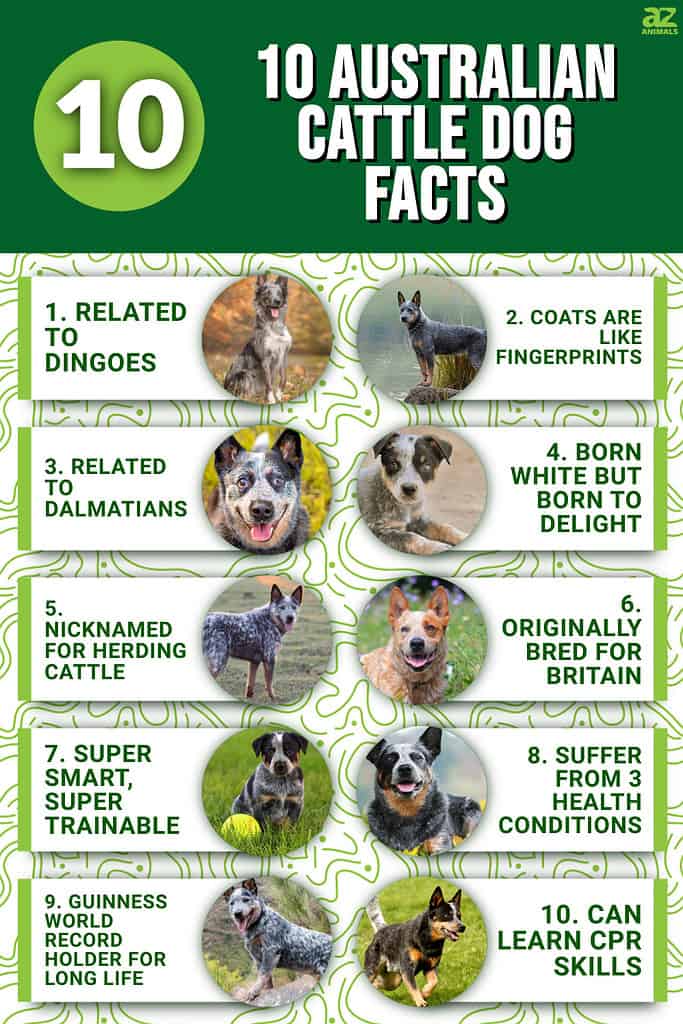
1. Australian Cattle Dogs Are Related to Dingoes
The Dingo is Australia’s number one land predator and is a relative of the Australian cattle dog. Experts believe that people brought Dingoes into the Australian region about 4,000 years ago, using them as companions or hunting animals. Since then and more recently, George Elliot created the Australian Cattle Dog breed by crossing a Dingo and a Blue Merle Collie.

Australian Cattle Dogs are related to the Blue
merle collie, one of the rarest colors of a Border Collier, the Dalmation, Dingoes, and Kelpies.
©Medenka Nera/Shutterstock.com
2. Australian Cattle Dog Coats Are Like Fingerprints
Australian Cattle Dog coats come in various colors, thanks to their heritage. And thanks to their heritage, their coats appear mottled or speckled, with shades of white, gray, blue, black, or red. But more importantly, the coats of these dogs are like fingerprints, with no one ever the same as another. Other unique coat traits include a contrasting color patch over one or both eyes, which is different from the color of the muzzle.
Besides unique fur patterns, the Australian cattle dog also has a double coat. Their thick, water-resistant double coats have short straight fur. This top coat is a protective layer that shields them from harsh conditions, and they shed twice a year to maintain this coat.
This dog breed has oval brown eyes and tapered ears. They have lean, evenly proportioned bodies built for power and endurance. Australian Cattle Dogs are 19 inches tall and weigh between 35 and 50 pounds. If you own an Australian Cattle Dog, you should brush it at least once a week for thorough grooming and more regularly during shedding season.
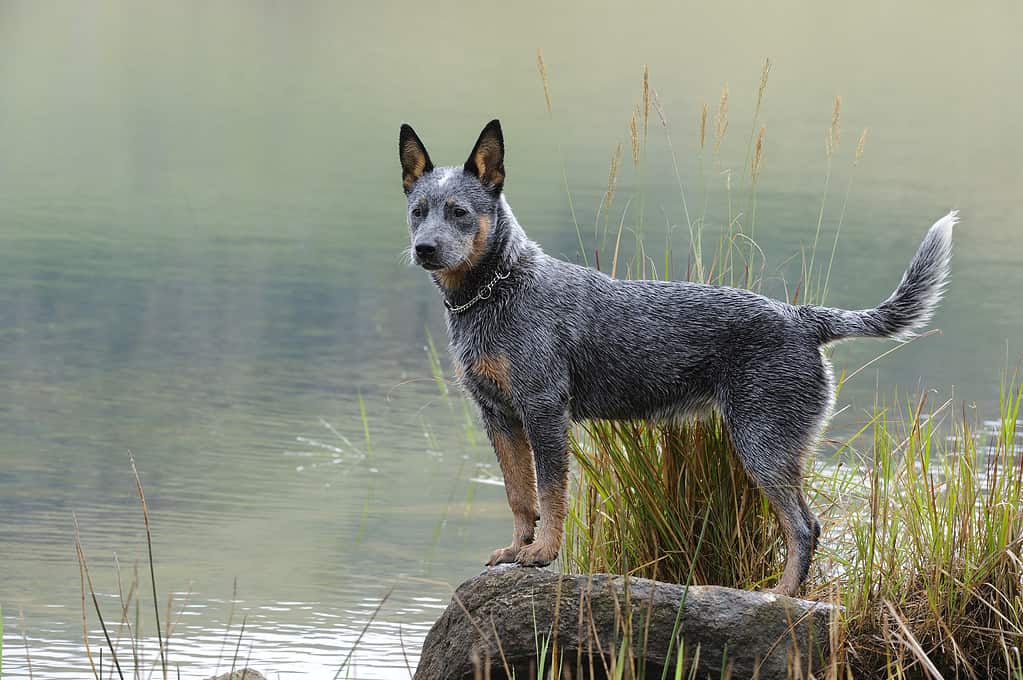
Australian Cattle Dogs have very unique coats and markings.
©ZE’EV AVNI/ via Getty Images
3. Australian Cattle Dogs Are Related to Dalmatians
George Elliot started cross-breeding dogs in 1840 and experimented with Dingo-Blue Merle Collie crosses. Elliot originally bred them as working dogs and then introduced Dalmatians into his experiments. He intended to create a breed that loved horses and was faithful to its owners but was unsuccessful. Elliot then took this fusion and added the Black and Tan Kelpies, a type of sheepdog. These dogs were built similarly to the Dingo, which was his ideal. After this, Elliot chose to breed only the best of these dogs, cementing the route to today’s Australian Cattle Dog.
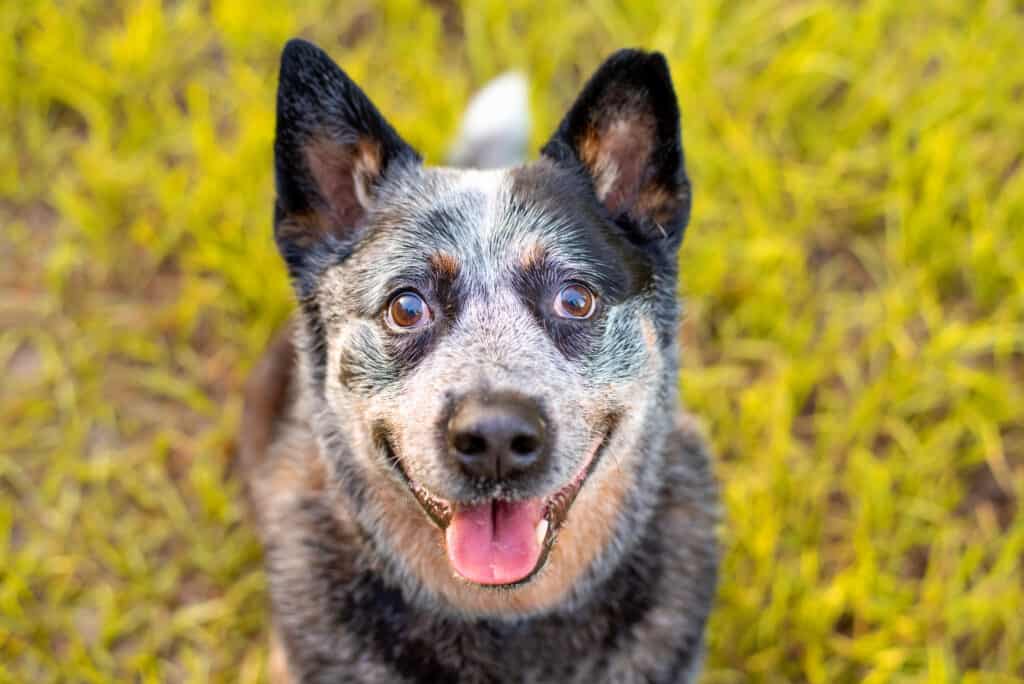
Australian cattle dogs are related to Dalmatians.
©iStock.com/Tatyana Consaul
4. Born White but Born to Delight
The Australian Cattle Dog’s puppies are born white before developing a multi-colored coat. This birth condition is a direct throwback to their Dalmatian ancestry, as Dalmatian puppies are also born white. After a few days, they begin developing their fascinating multi-colored coats.

Australian cattle dogs are born white before developing a multicoat.
©WiindWolfPhotography/ via Getty Images
5. Nicknamed For Herding Cattle
Besides being related to Dingoes, Dalmatians, and Kelpies, the Australian Cattle Dog earned its original name as a heeler in an interesting way. Bred to work in the cattle industry, farmers use them to steer livestock in grazing areas. To do this, the Australian Cattle Dog would nip at the heels of the cattle, which gave them their nickname. Aside from its natural instinct to herd, the heeler has a beautiful, even temperament, making it an excellent pet.
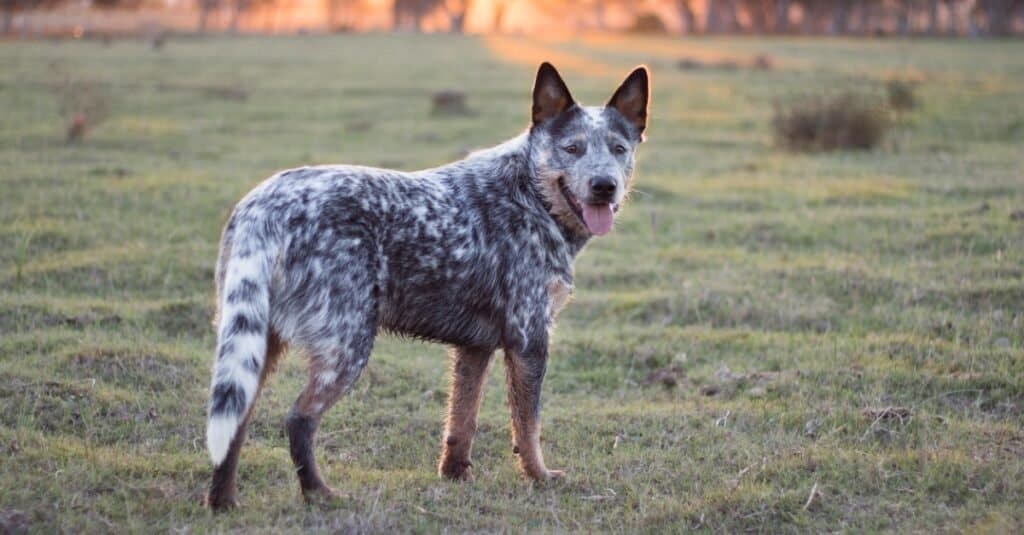
The Australian cattle dog has a name perfectly suited for a farm dog.
©iStock.com/Madelein_Wolf
6. Originally Bred for Britain
Although this breed thrives in Australia, they were bred to live in British terrain quite different from the Australian outback. This reason is why Elliot chose to experiment with other breeds to create a species that could handle the heat of Australia. After much investigation, Elliot created the Australian Cattle dog that was as successful as herding cattle as Black and Tan Kelpies were at herding sheep. Their power, endurance, and ability to drive cattle helped shape the Australian cattle industry. But, because Australian Cattle Dogs are rough and will easily nip at cattle to control them, their owners must train them for work and as pets.
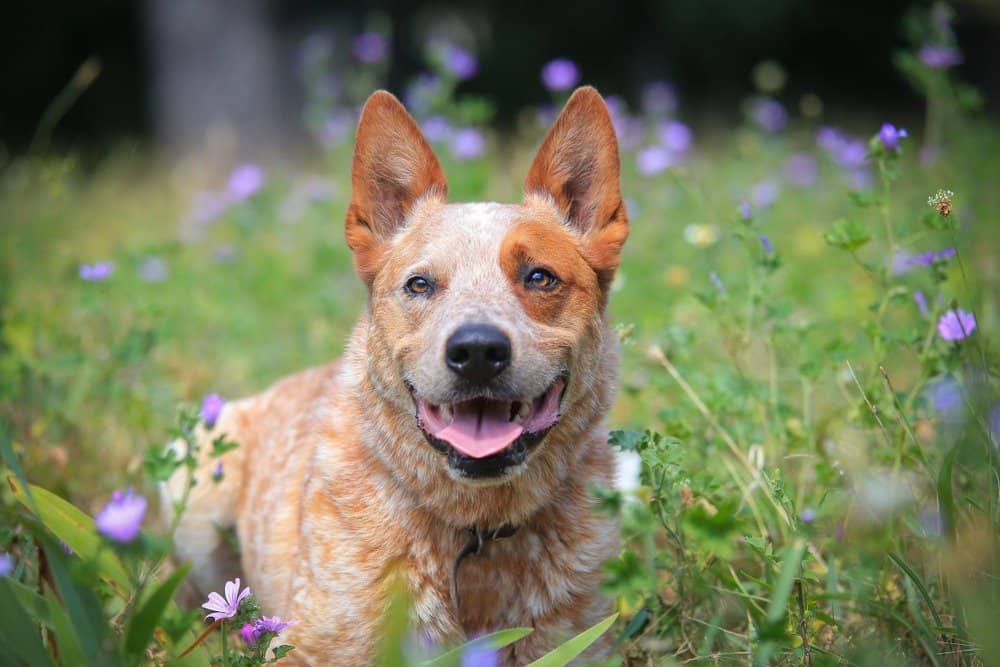
Australian cattle dogs have a natural tendency to nip at cattle’s feet.
©Melounix/Shutterstock.com
7. Super Smart, Super Trainable
Australian Cattle Dogs are very intelligent and one of the smartest dog breeds around. Collies are also intelligent, so it makes sense that the Australian Cattle dog shares this trait as they are also related. And, being good herders, they respond well to training, quickly understanding that their obedience means the difference between survival and disaster in the Outback. Moreover, these dogs need the training to harness their intelligence.
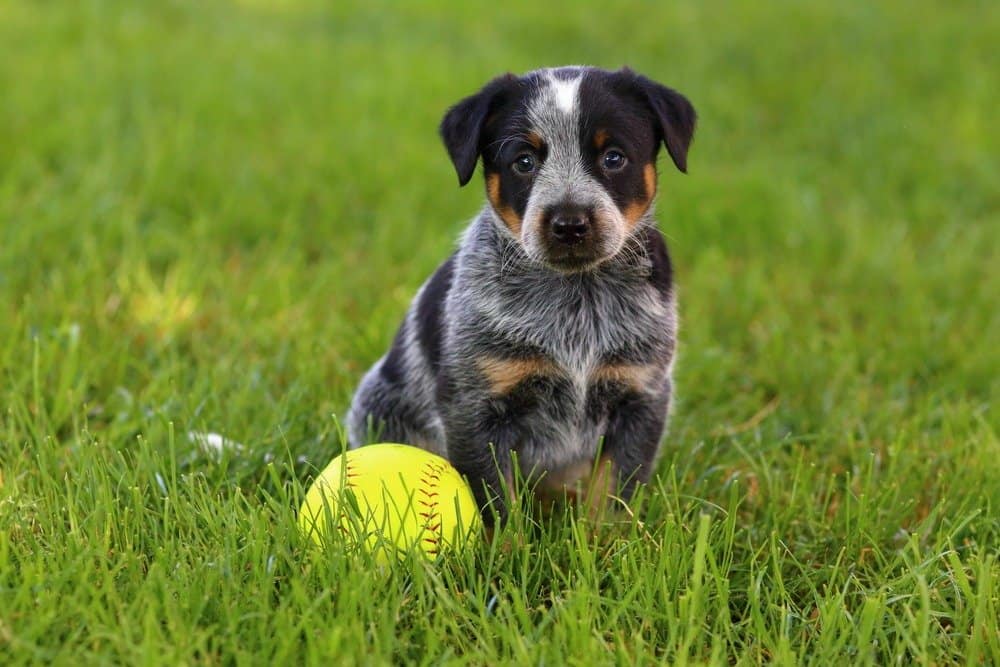
Australian cattle dogs are highly intelligent.
©JLSnader/Shutterstock.com
8. They Suffer from 3 Health Conditions
These dogs are typically healthy, but some will suffer from specific health conditions. When buying one of these dogs from a breeder, you should ask them for health certificates.
Australian Cattle Dogs are known to suffer from:
- Progressive Retinal Atrophy. This issue is a type of eye disease that causes the gradual deterioration of the retina. The dog will first become night-blind and then lose sight during the day. Impressively, many of these dogs can adapt to their weakened vision.
- Hip Dysplasia. Hip dysplasia is an inherited condition where the thigh bone no longer easily fits into the hip socket. Some dogs may display symptoms of pain, whereas others will not.
- Deafness. Australian Cattle Dogs with this condition have inherited it from their parents. However, breeders should test for the condition and discontinue breeding when they have proof of this fault. Moreover, scientists find deafness is color-linked in this breed, so Australian Cattle Dogs with a roan pattern will likely become deaf.

Australian cattle dogs are prone to eye and hip conditions.
©iStock.com/Carmelka
9. Guinness World Record Holder for Long Life
Bluey, an Australian Cattle Dog from Victoria, Australia, holds a Guinness World Record for being the oldest dog ever to live. Bluey lived to 29 years and five months old. He was not a domesticated dog but a proud working animal who lived with his herd of cattle. Born in 1910, Bluey lived a rich life until he was euthanized on 14th November 1939 due to old age.
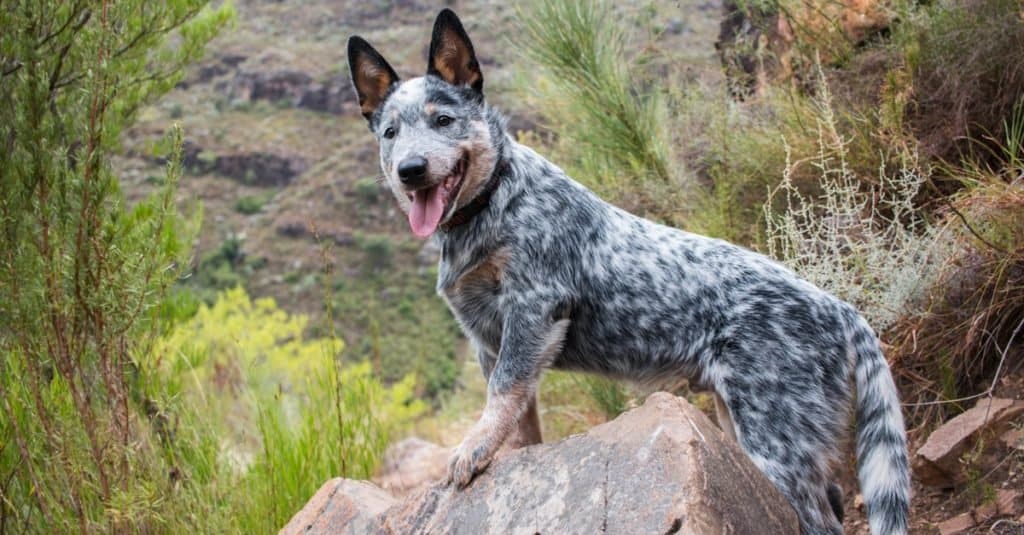
The greatest age recorded for a dog is 29 years 5 months for an Australian cattle-dog named Bluey.
©Madelein Wolfaardt/Shutterstock.com
10. Australian Cattle Dogs Can Learn CPR Skills
Probably due to this breed’s intelligence, one also demonstrated cardiopulmonary resuscitation (CPR) skills, effectively saving his owner’s life. In 2007 in Queensland, Australia, a 79-year-old owner had a heart attack. His Australian Cattle Dog began jumping on his chest while barking. This behavior successfully kickstarted his owner’s heart and saved his life.

Facts about Australian cattle dogs include holding a Guinness World Record for living to 29 years and five months.
©LNbjors/Shutterstock.com
Thank you for reading! Have some feedback for us? Contact the AZ Animals editorial team.








